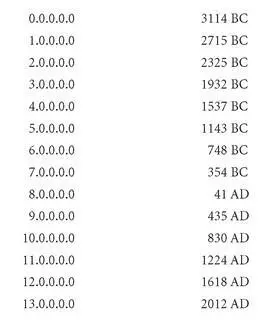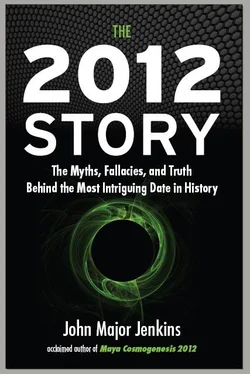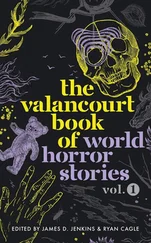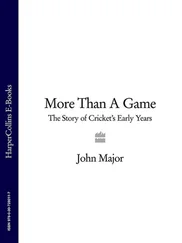It’s nevertheless clear that a healthy manuscript tradition developed in Yucatán. The fact is tragically apparent in the historical accounts of hundreds, if not thousands, of Maya books being destroyed during the Conquest in book burnings like the one at Mani in 1562. It is a sad and astounding fact that, given their prolific literacy we today have only four surviving Maya books. Fortunately, these remnants have provided intrepid researchers with enough information to reconstruct a great deal about Maya astronomy, religion, mythology, calendrics, and mythology. The bark paper books continued the Long Count tradition in Yucatán. But at some point after the collapse, the larger cycle of 13 Baktuns slipped into the background as a Short Count system was favored, emphasizing prophecy cycles of 13 Katuns. The new system was still congruent with the authentic, ancient calendar—there was no explicit break in the Katuns.
The Dresden Codex (one of the four surviving Maya books), believed to date to the eleventh or twelfth century but containing astronomical data going further back in time, contains an almanac called the Serpent Series. Research by Maya scholar Michael Grofe published in his PhD dissertation presents compelling new insights into how the distance numbers in the Serpent Series track very large astronomical periods. 23Grofe has determined that these distance numbers provide very accurate calculations for the sidereal year and the precession of the equinoxes. Subsequent research by Grofe and Maya epigrapher Barbara MacLeod has uncovered other precessional calculations connected to kingship rites in the inscriptions.
By the early 1500s a rich and elaborate tradition had tied the 13-Katun prophecy cycle (the Short Count) into rotating political duties, shifting power from one town to another over successive Katuns. This practice was not unlike the cofradia system employed by the highland Tzutujil Maya, in which different groups successively take their turns in charge of the religious customs. 24The 13-Katun prophecy system was fueled by the prognostications offered by the jaguar priests, the Chilam Balam (this name doesn’t refer to one specific person, but served as a title; there were many Chilam Balam from different towns). Many of these post-Conquest oracle books have survived and provide important information about the Short Count’s usage and survival through the centuries after the Conquest. They list years and Katun prophecies, and astute scholars have noted that they retain a continuity with the ancient Long Count.
For example, the Long Count date we previously discussed, 9.14.0.0.0, was the end of a “6 Ahau” Katun that ran from 692 to 711 AD. In the Chilam Balam Book of Tizimin we find a retrospective account that begins with this Katun, and sequences through the following Katuns with historical recollections of wars and rulers celebrated in the memories of the Itza people. It brings the accounting all the way up to the 6 Ahau Katun that began in 1717. The one right after this in the list is the 4 Ahau Katun, which began in 1737 and ended in 1756—exactly one 13-Katun prophecy cycle before the 2012 cycle-ending date. 25
A festive ceremonial for the 12.0.0.0.0 Baktun ending in 1618 AD is recorded in the Book of Chilam Balam of Chumayel . The Baktun 11 ending of 1224 AD was also recognized by the Yucatec Maya jaguar priests, so a knowledge of larger Baktun cycles was at least a footnote in the tradition, which nevertheless now preferred 13-Katun cycles over 13-Baktun cycles. 26One wonders if jaguar priests present for the 1618 Baktun ceremonial had the ability, or desire, to project forward one more Baktun to 2012.

I always found it interesting that the middle of the 13-Baktun cycle (6.19.5.0.0 = 550 BC) corresponds to the appearance of two pivotal historical figures, key avatars of Western and Eastern religion and philosophy—the Buddha and Pythagoras.
At any rate, it’s clear that all the Baktun endings during the 13-Baktun cycle were recognized in one way or another by the Maya. This includes retrospective calculations of Baktun endings in the distant past as well as projections to future ones, including the one in 2012. That the Yucatec Maya may have been aware of the overarching important of the one in 2012 is suggested by the language used in the various Chilam Balam books. British researcher and author Geoff Stray has carefully investigated this material and points out that Maud Makemson’s translation of the Chilam Balam Book of Tizimin infers a reference to a 13-Baktun ending, indirectly. It’s a passage often glossed as 13-Katun, but the original Yucatec phrasing cannot be translated that way. And the context is for a larger temporal period. Stray relates that “Four Ahau is the Katun for remembering knowledge and compressing it within annals” and explains:
In Makemson’s translation of the Chilam Balam of Tizimin, evidence is presented in Makemson’s commentary, that many of the prophecies probably did refer to the end of the 13-baktun cycle, but due to loss of knowledge of the Long Count, and the changing of naming katuns after their last day instead of their first, plus the introduction of 24-year katuns, the resulting confusion detached the prophecies from their original predicted time. 27
Adding to this confusion, the continuity of the Short Count system was disrupted by a calendar reform in 1752. The pressures of acculturation, historical distancing from the origins of the calendar tradition, modernization—all these factors made this dislocation inevitable. Perhaps agents of cultural assimilation had infiltrated the ranks of the Maya calendar priests. 28For whatever reason, a new standard was implemented in which the 13-Katun prophecy cycle was altered. Now a 24-year period would be used. Why this was preferable is not clear. The impending completion of the 4 Ahau Katun in 1756 offered a perfect 13-Katun time resonance with the great 13-Baktun cycle ending in 2012, but divisiveness and confusion must have ruled the day. Whatever the motivations of the innovators, the result was clear: one more notch of dislocation for the ancient tradition.
Maya tradition in Yucatán during this time was experiencing other death blows. In 1761 a well-respected Maya leader and Christian theologian named Jacinto Canek led a short-lived uprising against Spanish landowners. He traveled the countryside and visited towns, observing the conditions of his people and their relationships with the Spanish overlords. He did not like what he saw. After a religious ceremony he spoke to the people:
My beloved children, I do not know what you await to shake off the heavy yoke and laborious servitude in which the subjugation of the Spanish has placed you. I have traveled through all of the province and have inspected all of the villages and, considering carefully the usefulness the Spanish subjugation has brought to us, I have not found a single thing but painful and inexorable servitude…. The demand for tribute is not appeased by the poverty that locks up our comrades as in a jail, nor is the thirst for our blood satisfied by the continuous whippings that bite and tear our bodies to pieces. 29
Within days of this speech Canek was involved in a clash in which a Spanish merchant was killed. The Maya people rallied around Canek the same day and crowned him their king. Within a week an armed Spanish militia arrived and the Maya were overpowered, five hundred being killed in a fire set by the Spanish. Canek and some guards escaped but were soon apprehended. They were immediately condemned to death. Eight of his closest followers were hanged and dismembered, and their body parts were sent for display in outlying villages as a reminder of the price to pay for disobeying the overlords. Jacinto Canek was himself publicly tortured in the plaza at Mérida, his flesh ripped from his bones by hot pincers and his bones broken one by one with heavy metal bars. At some point during this torture, he died. His body was then burned. If anything symbolized the dislocation of Maya tradition in Yucatán, it had to be this event.
Читать дальше













